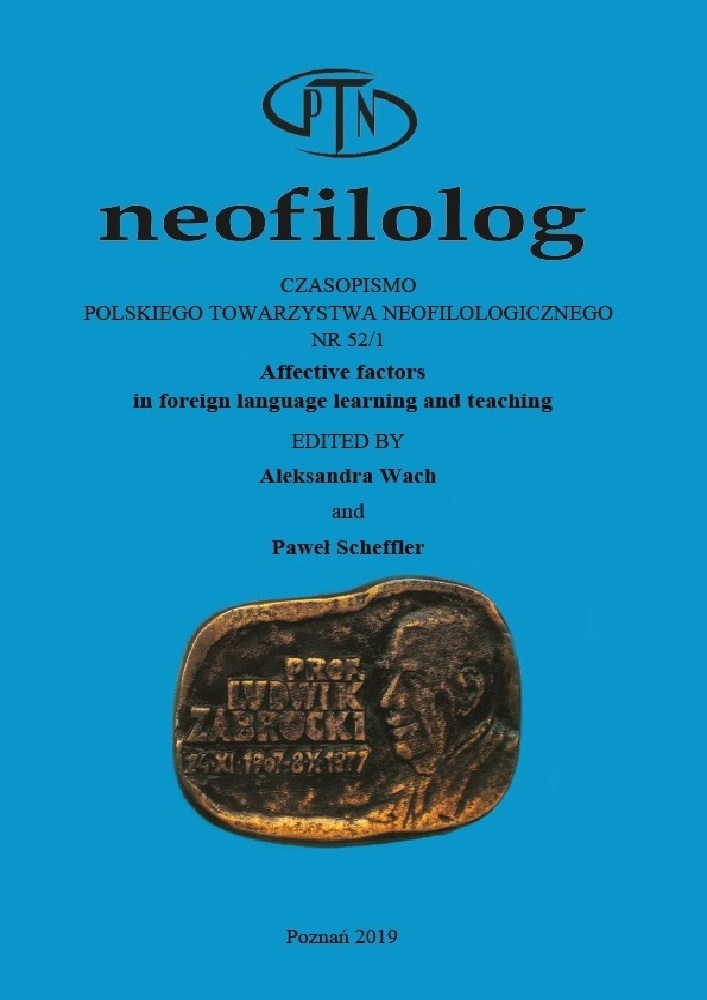Abstrakt
For many second and foreign language learners, the goal of language instruction is fluent oral performance. Such performance can be achieved if the mechanisms underlying L2 performance have been automatized. It is generally recognized that promoting automaticity in the classroom requires massive repetition and consistent practice, which, however, need to correspond to conditions of use in order for transfer into real speech to take place. It is also often acknowledged that meeting these requirements in classroom instruction is very difficult as traditional repetitive practice activities often take time away from communicative language use and fail to induce positive emotions in learners. In this article, we take a fresh look at the theory behind, and the implementation of, pattern practice. We begin by arguing that it is construction grammar that provides a theoretical oundation for pattern practice. We also demonstrate that monolingual drills in the audiolingual method marginalized meaning and were often mechanical. We then present bilingual drills as an alternative exercise type which facilitates pattern recognition, oral repetition and focus on meaning. We show that referring to the native language makes it possible to localize and individualize the examples used and to induce positive emotions in the process. Finally, we discuss communicative drills and use transcripts of classroom interaction to demonstrate that repetitive practice, communication and positive emotions can all be combined.
Bibliografia
Butzkamm W., Caldwell J.A.W. (2009), The bilingual reform: A paradigm shift in foreign language teaching. Tübingen: Gunter Narr Verlag.
Dąbrowska E. (2004), Language, mind and brain. Edinburgh: Edinburgh University Press.
DeKeyser R.M. (1998), Beyond focus on form: Cognitive perspectives on learning and practising second language grammar (in) Doughty C., Williams J. (eds.), Focus on form in classroom second language acquisition. Cambridge: Cambridge University Press, pp. 42-63.
DeKeyser R.M. (2007), Introduction: Situating the concept of practice (in) DeKeyser R. (ed.), Practice in a second language. Cambridge: Cambridge University Press, pp. 1-18.
Dewaele J.M., MacIntyre P.D. (2014), The two faces of Janus? Anxiety and enjoyment in the foreign language classroom (in) “Studies in Second Language Learning and Teaching” No 4(2), pp. 237-274.
Dodson C.J. (1967), Language teaching and the bilingual method. London: Pitman.
Fredrickson B. L. (2003), The value of positive emotions (in) “American Scientist” No 91(4), pp. 330-335.
Gatbonton E., Segalowitz N. (2005), Rethinking communicative language teaching: A focus on access to fluency (in) “The Canadian Modern Language Review” No 61, pp. 325-353.
Givón T. (1979), On understanding grammar. New York: Academic Press.
Grittner F. (1969), Teaching foreign languages. New York: Harper and Row.
Kelly L.G. (1969), 25 centuries of language teaching: An inquiry into the science, art, and
development of language teaching methodology: 500 B.C. – 1969. Rowley: Newbury House.
Larsen-Freeman D. (2015), Research into practice: Grammar learning and teaching (in) “Language Teaching” No 48, pp. 263-280.
MacIntyre P.D., Gregersen T. (2012), Emotions that facilitate language learning: The positive-broadening power of the imagination (in) “Studies in Second Language Learning and Teaching” No 2(2), pp. 193-213.
Richards J.C., Rodgers T.S. (2001), Approaches and methods in language teaching. Cambridge: Cambridge University Press.
Roehr-Brackin K. (2014), Explicit knowledge and processes from a usage-based perspective: the developmental trajectory of and instructed L2 learner (in) “Language Learning” No 64, pp. 771-808.
Scheffler P. (2013), Gramatyczne dryle tłumaczeniowe w nauczaniu języka angielskiego (in) „Języki Obce w Szkole” No 1/2013, pp. 82-87.
Scheffler P. (2016), Implementing bilingual pattern practice (in) “RELC Journal” 47(2), pp. 253-261.
Seleskovitch D. (1975), Langages, langues et memoire. Paris: Lettres Modernes.
Segalowitz N. (2003), Automaticity and second languages (in) Doughty C., M. Long M. (eds.), The handbook of second language acquisition. Malden: Blackwell, pp. 382-408.
Segalowitz N. (2010), Cognitive bases of second language fluency. New York: Routledge.
Tomasello M. (2003), Constructing a language: A usage-based theory of language acquisition. Cambridge, MA: Harvard University Press.
Wong W., VanPatten B. (2003), The evidence is IN: Drills are OUT (in) “Foreign Language Annals” No 36, pp. 403-24.
Licencja
Prawa autorskie (c) 2019 Paweł Scheffler, Wolfgang Butzkamm

Utwór dostępny jest na licencji Creative Commons Uznanie autorstwa – Bez utworów zależnych 4.0 Międzynarodowe.
Przedstawiany utwór (artykuł) upubliczniany jest na podstawie umowy z autorem i na licencji Creative Commons Attribution-NoDerivatives 4.0 International (CC BY-ND 4.0).
Użytkownicy mają obowiązek podania wraz z rozpowszechnionym utworem, informacji o autorstwie, tytule, źródle (odnośniki do oryginalnego utworu, DOI) oraz samej licencji;
- bez tworzenia utworów zależnych,
- utwór musi być zachowany w oryginalnej postaci.
Uniwersytet im. Adama Mickiewicza w Poznaniu zachowuje prawo do czasopisma jako całości (układ, forma graficzna, tytuł, projekt okładki, logo itp.).

